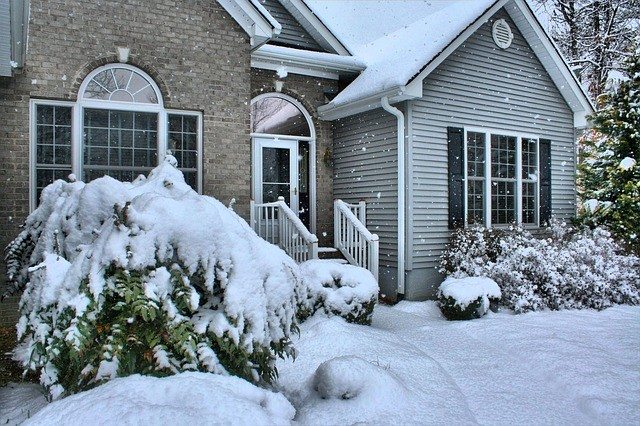
The cold season is fast approaching. Winter on the horizon places prospective home buyers in a dubious situation when it comes to home inspection. Knowing about the home preparedness process and being vigilant are key steps to protecting your investment. At Sherman Home Inspections, we have compiled a list of factors that help and hinder the home inspection process during the winter season. Compiled over the course of our many years aiding and protecting prospective home buyers, this list weighs the pros and cons of home inspections when ice and snow are factors.
The first and most obvious area that presents a problem during the winter season is the roof. Every roof looks appealing with an even sheet of snow layered over it. However, it is impossible to do an effective inspection until the snow has melted. In fact, even attempting an inspection is both pointless and physically hazardous. The snow prevents an inspector from seeing the shingles on the roof. For this reason, it is best to wait for the snow to melt and then conduct a thorough inspection. Also, consider that melting snow can worsen any prior damage to the roof or cause damage in and of itself.
Secondly, snow piles up, be it from natural snowfall and/or shoveling. When this happens, it is impossible for the inspector to see and carefully inspect the foundation.
The porch is another problem area in that the inspector must first clear any snow to inspect beneath the porch. This often means crawling beneath tight spaces, muddying yourself in the cold and uncomfortable wetness before having to go inside to continue the inspection.
Inspecting wood surfaces, too, become a challenge. Inspectors use a simple tool called a poker to check for termite or carpenter ants damage. In this case, experience is a benefit. If water seeped into the wood and turned ice, knowing what a wood surface should and shouldn’t sound like is beneficial.
Just like wood, pipes, and windows freeze as well. The cold can cause a pipe to crack creating leaking problems down the line. Once the pipe becomes frozen it can hide the issue of cracks and potential leaking problems.
When rain seeps beneath a window and crawls itself into crevices like the window track, it freezes there. That occurs and windows become difficult to open and close because they are frozen shut.
During colder months, insects like termites and carpenter ants go dormant, the lack of activity, however, doesn’t mean they are not there.
Most homebuyers don’t know that you cannot test an A/C unit if outdoor temperatures drop to below 60 degrees. Turning on your A/C unit when temperatures drop that low can damage the unit.
There are benefits to winter inspections, however. Winter is a perfect time to test the heat since it is difficult to turn on the heat in warmer weather. This leads us to drafts and insulation. When your heat is working, you want it to remain indoors. During the summer an attic can reach temperatures of up to 140 degrees. When it becomes that hot, it is impossible to tell how well the insulation is doing.
At Sherman’s Home Inspections, we believe an informed consumer makes smarter decisions. Now that you are equipped with the information, you can decide whether a home inspection during the colder months suits your needs.
Contact us today at Phone: (508) 947-7595 Email: shermanhomeinspections@shermanhomeinspections.com or visit https://shermanhomeinspections.com/

Comments are closed.